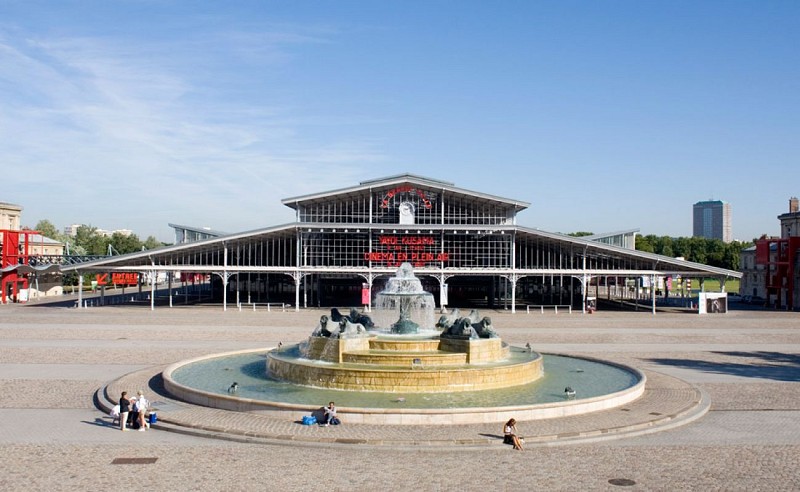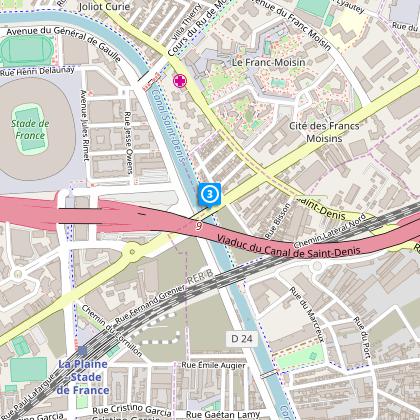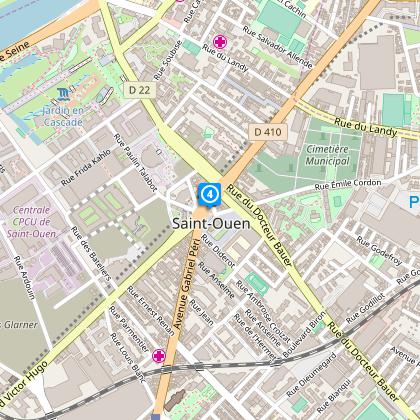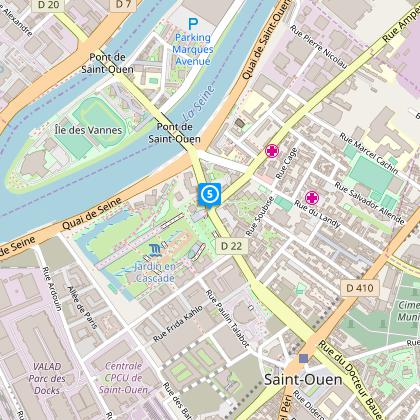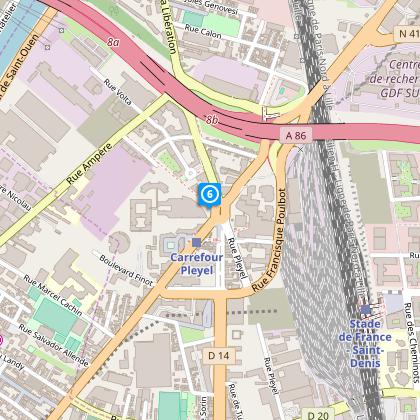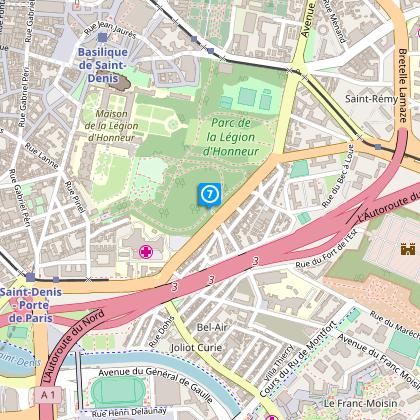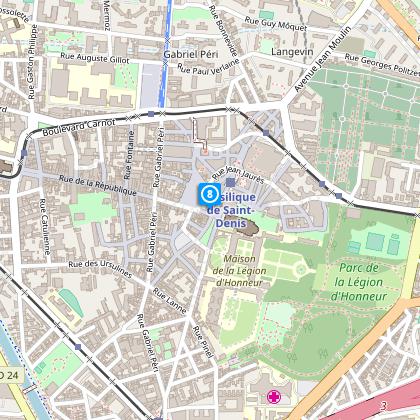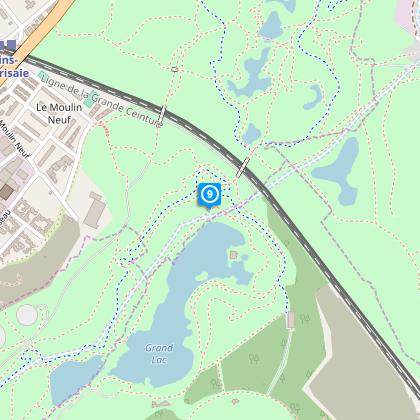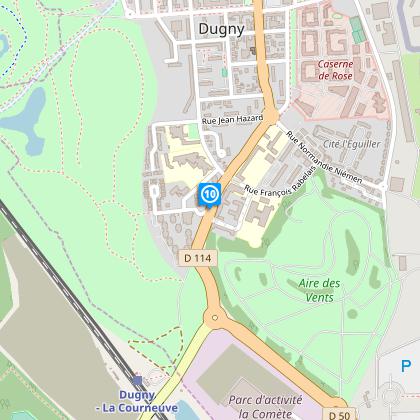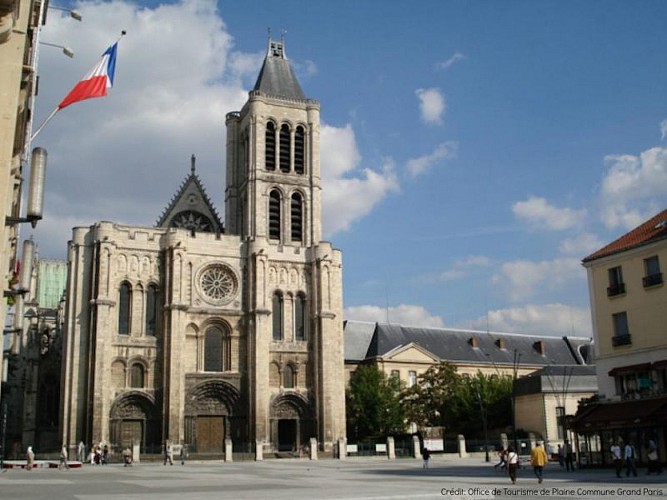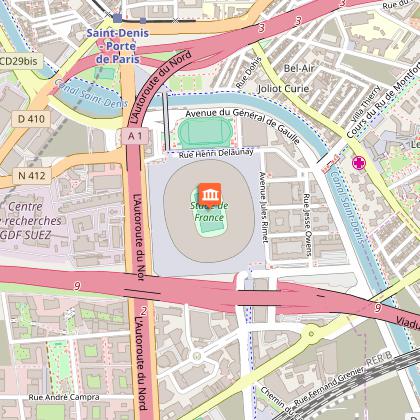Allarme
Allarmi
Tipo di pratica
A piedi
Facile
6h
Presentazione
Mappa
Tappe
Punti di interesse
Sintesi di Cirkwi
Valutazioni e recensioni
Vedi nei dintorni
24 Km per l'edizione 2024 2017

Credito : tourisme93.com
Il breve di Cirkwi
Scopri lo spirito olimpico di Parigi: una marcia culturale di 24 km
Il percorso di 24 km per il 2024 non è solo una passeggiata; è un'esperienza coinvolgente che sostiene la candidatura di Parigi ai Giochi Olimpici e Paralimpici mentre svela il patrimonio architettonico e ambientale di Seine Saint Denis. Offerto dalla FFRandonnee Seine-Saint-Denis, questa avventura permette ai partecipanti di scegliere tra distanze che vanno dai 9,5 km ai 24 km, rendendola accessibile a tutti. Catturando lo spirito delle Olimpiadi, il percorso ti guida attraverso luoghi storici, tra cui l'iconica Basilica di Saint-Denis, unendo l'attività fisica all'esplorazione culturale in una celebrazione unica del passato di Parigi e dei suoi futuri sogni olimpici.
Dettagli chiave del percorso svelati
Coprendo circa 26,9 chilometri, questo percorso accuratamente pianificato raggiunge un'altitudine massima di 57 metri, con il punto più basso situato a 28 metri sul livello del mare. Le altitudini oscillano, presentando un cambiamento positivo di altitudine cumulativo moderato tra i 51 e i 67 metri lungo tutto il percorso. Strutturato dalla FFRandonnee Seine-Saint-Denis, è un percorso che sfida e premia, trovando un equilibrio tra l'accessibilità per il camminatore occasionale e l'interesse per l'escursionista più esperto.
Consigli stagionali per ogni viaggiatore
Indipendentemente dalla stagione, prepararsi per il percorso di 24 km richiede alcune considerazioni. La primavera e l'autunno offrono temperature miti e paesaggi vivaci, rendendoli ideali per camminare. Tuttavia, preparati alla pioggia portando abbigliamento impermeabile. Le estati possono essere calde, quindi è consigliabile iniziare presto al mattino per evitare il caldo, oltre a portare una protezione solare e abbondante acqua. L'inverno, anche se più freddo, offre un'atmosfera frizzante; vestirsi a strati per il calore, assicurando nel contempo buone calzature per i sentieri eventualmente scivolosi, è fondamentale. Dal punto di vista della sicurezza, informa sempre qualcuno dei dettagli del tuo percorso prima di partire.
Seine Saint Denis: cuore del patrimonio
Seine Saint Denis, con il suo ruolo centrale come meta per il percorso di 24 km, è un vibrante mosaico di significato culturale e storico, particolarmente notevole per luoghi come la Basilica di Saint-Denis. Questa regione, che mescola un passato ricco con un presente in continua evoluzione, offre una narrazione profonda sulla storia reale della Francia e uno sguardo al futuro del paese come possibile ospite olimpico. L'area è una testimonianza della maestria architettonica della Francia e della sua lunga tradizione di commemorare eroi ed eventi storici attraverso monumenti, rendendola una risorsa educativa preziosa sia per i locali che per i visitatori.
Guida climatica per una visita ottimale
Il clima nella zona parigina, compresa Seine Saint Denis, è prevalentemente oceanico, con estati miti o moderatamente calde e inverni freddi. Le precipitazioni sono distribuite in modo equo lungo tutto l'anno, il che implica che non c'è un momento specificamente sbagliato per intraprendere il percorso di 24 km per il 2024. Tuttavia, per un'esperienza più piacevole, mira alla tarda primavera (maggio-giugno) o all'inizio dell'autunno (settembre-ottobre). In queste periodi si ha generalmente un clima temperato, sentieri meno affollati e la bellezza naturale della regione in una transizione delicata, che offre uno sfondo ottimale per questa esplorazione culturale e storica.
Il percorso di 24 km per il 2024 non è solo una passeggiata; è un'esperienza coinvolgente che sostiene la candidatura di Parigi ai Giochi Olimpici e Paralimpici mentre svela il patrimonio architettonico e ambientale di Seine Saint Denis. Offerto dalla FFRandonnee Seine-Saint-Denis, questa avventura permette ai partecipanti di scegliere tra distanze che vanno dai 9,5 km ai 24 km, rendendola accessibile a tutti. Catturando lo spirito delle Olimpiadi, il percorso ti guida attraverso luoghi storici, tra cui l'iconica Basilica di Saint-Denis, unendo l'attività fisica all'esplorazione culturale in una celebrazione unica del passato di Parigi e dei suoi futuri sogni olimpici.
Dettagli chiave del percorso svelati
Coprendo circa 26,9 chilometri, questo percorso accuratamente pianificato raggiunge un'altitudine massima di 57 metri, con il punto più basso situato a 28 metri sul livello del mare. Le altitudini oscillano, presentando un cambiamento positivo di altitudine cumulativo moderato tra i 51 e i 67 metri lungo tutto il percorso. Strutturato dalla FFRandonnee Seine-Saint-Denis, è un percorso che sfida e premia, trovando un equilibrio tra l'accessibilità per il camminatore occasionale e l'interesse per l'escursionista più esperto.
Consigli stagionali per ogni viaggiatore
Indipendentemente dalla stagione, prepararsi per il percorso di 24 km richiede alcune considerazioni. La primavera e l'autunno offrono temperature miti e paesaggi vivaci, rendendoli ideali per camminare. Tuttavia, preparati alla pioggia portando abbigliamento impermeabile. Le estati possono essere calde, quindi è consigliabile iniziare presto al mattino per evitare il caldo, oltre a portare una protezione solare e abbondante acqua. L'inverno, anche se più freddo, offre un'atmosfera frizzante; vestirsi a strati per il calore, assicurando nel contempo buone calzature per i sentieri eventualmente scivolosi, è fondamentale. Dal punto di vista della sicurezza, informa sempre qualcuno dei dettagli del tuo percorso prima di partire.
Seine Saint Denis: cuore del patrimonio
Seine Saint Denis, con il suo ruolo centrale come meta per il percorso di 24 km, è un vibrante mosaico di significato culturale e storico, particolarmente notevole per luoghi come la Basilica di Saint-Denis. Questa regione, che mescola un passato ricco con un presente in continua evoluzione, offre una narrazione profonda sulla storia reale della Francia e uno sguardo al futuro del paese come possibile ospite olimpico. L'area è una testimonianza della maestria architettonica della Francia e della sua lunga tradizione di commemorare eroi ed eventi storici attraverso monumenti, rendendola una risorsa educativa preziosa sia per i locali che per i visitatori.
Guida climatica per una visita ottimale
Il clima nella zona parigina, compresa Seine Saint Denis, è prevalentemente oceanico, con estati miti o moderatamente calde e inverni freddi. Le precipitazioni sono distribuite in modo equo lungo tutto l'anno, il che implica che non c'è un momento specificamente sbagliato per intraprendere il percorso di 24 km per il 2024. Tuttavia, per un'esperienza più piacevole, mira alla tarda primavera (maggio-giugno) o all'inizio dell'autunno (settembre-ottobre). In queste periodi si ha generalmente un clima temperato, sentieri meno affollati e la bellezza naturale della regione in una transizione delicata, che offre uno sfondo ottimale per questa esplorazione culturale e storica.
Generato automaticamente.
IGN Carte
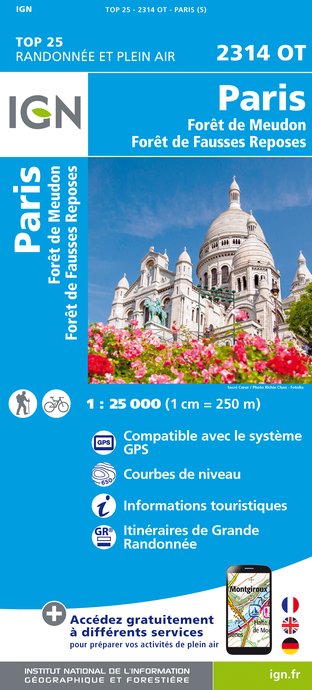
2314OT - PARIS FORÊT DE MEUDON FORÊT DE FAUSSES REPOSES
Editore : IGN
Collezione : TOP 25 ET SÉRIE BLEUE
Scala : 1:25 000
13.90€

119 PARIS SENS PNR DU GÂTINAIS FRANÇAIS
Editore : IGN
Collezione : TOP 100
Scala : 1:100 000
8.40€

190 PARIS CHANTILLY FONTAINEBLEAU
Editore : IGN
Collezione : TOP 100
Scala : 1:100 000
8.40€

118 PARIS CHARTRES PNR DE LA HAUTE VALLÉE DE CHEVREUSE
Editore : IGN
Collezione : TOP 100
Scala : 1:100 000
8.40€
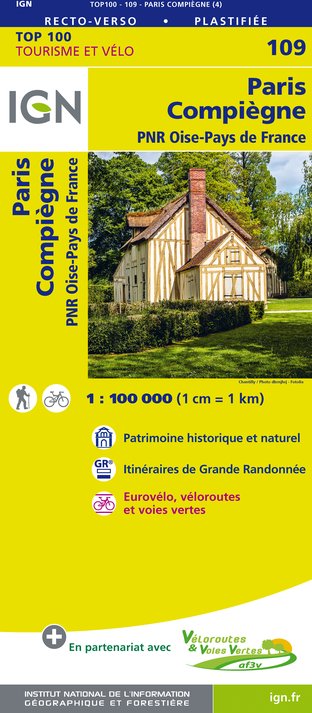
109 PARIS COMPIÈGNE PNR OISE-PAYS DE FRANCE
Editore : IGN
Collezione : TOP 100
Scala : 1:100 000
8.40€

108 PARIS ROUEN BEAUVAIS PNR DU VEXIN FRANÇAIS
Editore : IGN
Collezione : TOP 100
Scala : 1:100 000
8.40€

D75-95 ÎLE-DE-FRANCE OUEST
Editore : IGN
Collezione : CARTES DÉPARTEMENTALES IGN
Scala : 1:150 000
5.90€

D77 SEINE-ET-MARNE
Editore : IGN
Collezione : CARTES DÉPARTEMENTALES IGN
Scala : 1:150 000
5.90€

NR08 CENTRE-VAL DE LOIRE
Editore : IGN
Collezione : CARTES RÉGIONALES IGN
Scala : 1:250 000
6.80€

NR03 ÍLE DE FRANCE
Editore : IGN
Collezione : CARTES RÉGIONALES IGN
Scala : 1:250 000
6.80€

NR01 HAUTS-DE-FRANCE
Editore : IGN
Collezione : CARTES RÉGIONALES IGN
Scala : 1:250 000
6.80€

801 FRANCE NORD OUEST
Editore : IGN
Collezione : CARTES NATIONALES IGN
Scala : 1:320 000
6.10€

EUROPE
Editore : IGN
Collezione : DÉCOUVERTE DES PAYS DU MONDE IGN
Scala : 1:2 500 000
7.00€
Informazioni tecniche
A piedi
Difficoltà
Facile
Durata
6h
(1g)
Dist.
27 km
Tipo di pratica
A piedi
Facile
6h
Mostra di più
Profilo altimetrico
Punto di partenza
Galerie de la Villette
,
75019
Paris
Lat : 48.89166Lng : 2.3891
Tappe
Punti di interesse
Autore dei dati

proposto da
CDRP 93
1Ter Place des martyrs de la Résistance et de la Déportation 93110 Rosny-sous-Bois France
Valutazioni e recensioni
Da vedere nei dintorni
